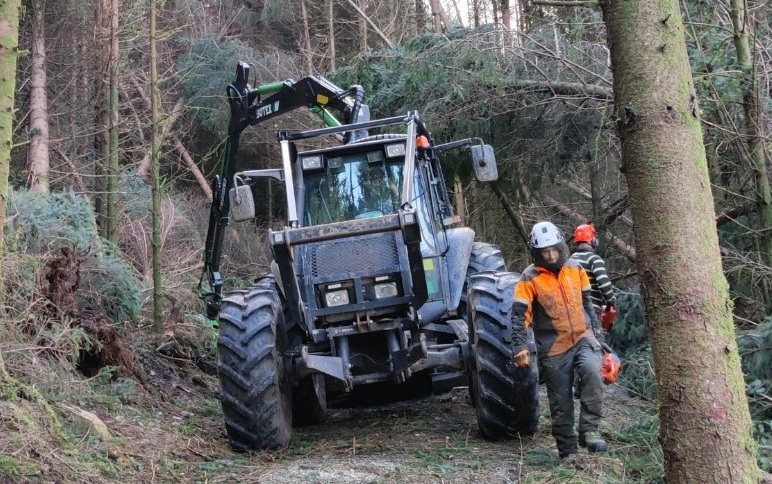
A new working group is being set up to help small woodland owners and farmers with clearing up after Storm Arwen, which battered the UK two months ago.
The move comes after meetings between public forestry agencies and the private sector to assess the scale of damage after the storm, and identify capacity issues in the worst affected areas.
There are fears that the powerful winter storm destroyed around 4,000 hectares of woodland in Scotland alone.
The working group, whose membership will soon be formulated, will prepare advice on what small woodland owners and farmers need to do to clear the fallen trees.
Part of this will include providing information to them on what species of tree may be best placed for replanting.
Scotland's Environment Minister Màiri McAllan attended the latest meeting (27 January) organised by Scottish Forestry and trade body CONFOR.
She said more could be done to help out small woodland owners and farmers, many of whom "will not have encountered such a devastating storm."
“Storm Arwen might have happened last year but its effects will be felt by many for some time to come," the Minister said.
“I am impressed how the major players in the forestry sector are working together in such a collaborative way.
"This co-ordination of action is needed and I would like to thank the industry for their pragmatic way of dealing with the storm’s aftermath.
“With targeted advice, we can help farmers and small owners manage the aftermath, whilst creating more resilient woodlands for the future.”
Previous forestry meetings in the wake of Storm Arwen have taken place to support the situations in the north east and south of Scotland, as well as the north of England, which was also badly affected.
Andy Leitch, deputy chief executive of trade forestry body Confor added: “The whole wood supply chain is working collectively to understand what specific support woodland owners, both large and small, need in the wake of the storm.
“The first priority is making forests and woods safe, then understanding how and when to remove the windblown wood safely and to coincide with market demand.
"That involves close cooperation between foresters, woodland owners and wood processors - and that cooperation is progressing well."
Scottish Forestry has been fast tracking felling permissions which are linked to clearing up after the storm.
It would normally take up to six weeks to process a Felling Permission however Scottish Forestry is turning these around in about 10 days.
Around 238 applications have been received so far and 155 approved to date.
